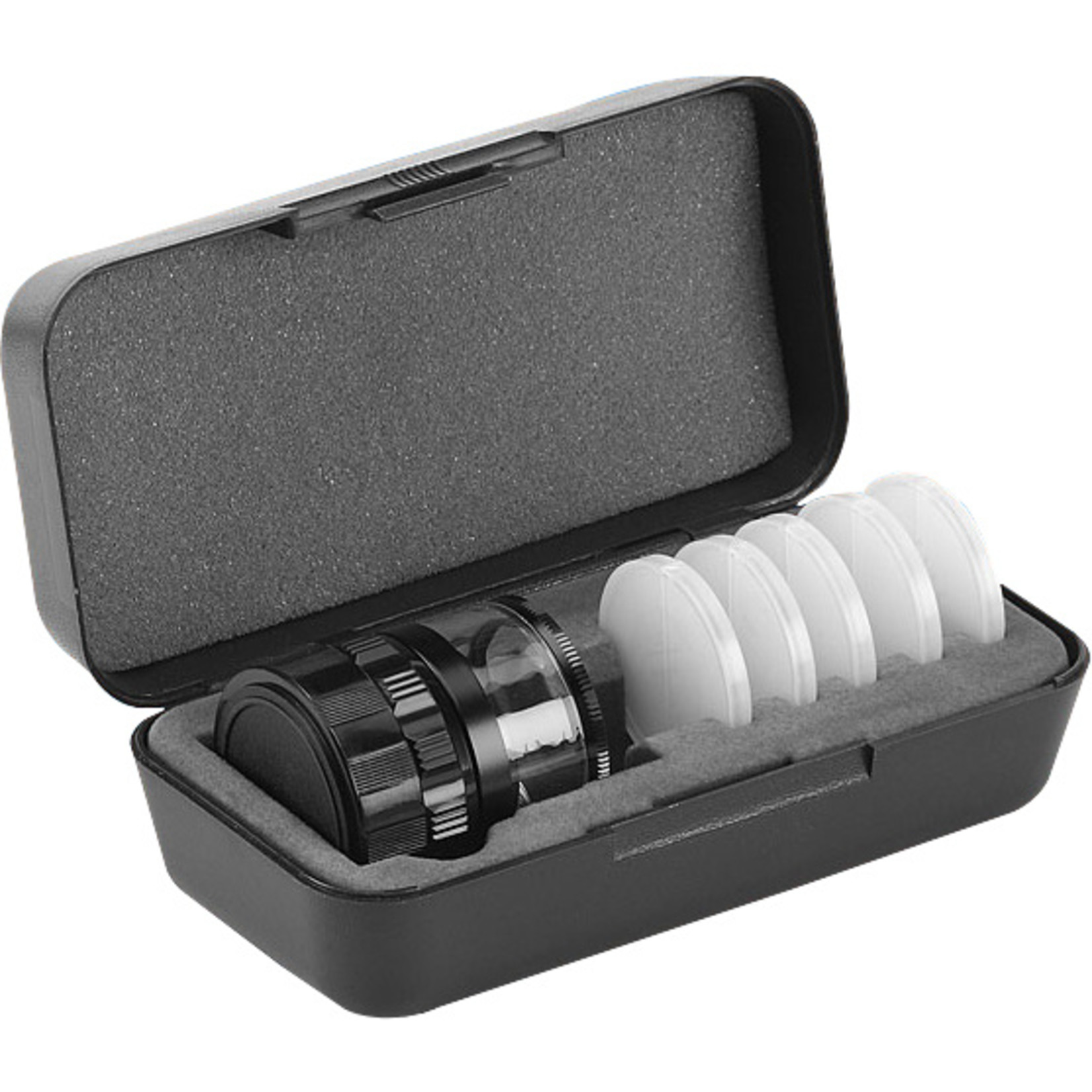Precision measuring magnifier with achromatic (color error corrected) coated optics consisting of 3 elements and 2 assemblies. The contradiction between high resolving power and wide field of view has been completely eliminated in this product, providing powerful, precise control. For higher transmission, the lenses are coated with an AR coating (anti-reflective coating). The loupe comes with a box for measuring loupe and the five scales # 2, # 3, #7, # 8 and # 10. Additional scales in black and white are optionally available.
Magnification: 10x
Focusable: Yes
Field of view: 34 mm
Measuring length: depending on scale
Scale: 5 scales included
Optics: Achromat,
Distortion free
Dimensions: 46 x 44 mm
Weight: 165 grams
Case: 125 x 60 x 60 mm
In optics, an achromat is a system of two lenses consisting of glasses with different Abbe numbers (different degrees of dispersion). The system contains a converging lens (usually made of crown glass) and a diverging lens with a smaller Abbe number and thus stronger dispersion than the converging lens (usually made of flint glass). This allows the longitudinal color error that any simple lens has to be corrected for two wavelengths, meaning that the system has the same cut-off for these two colors.








